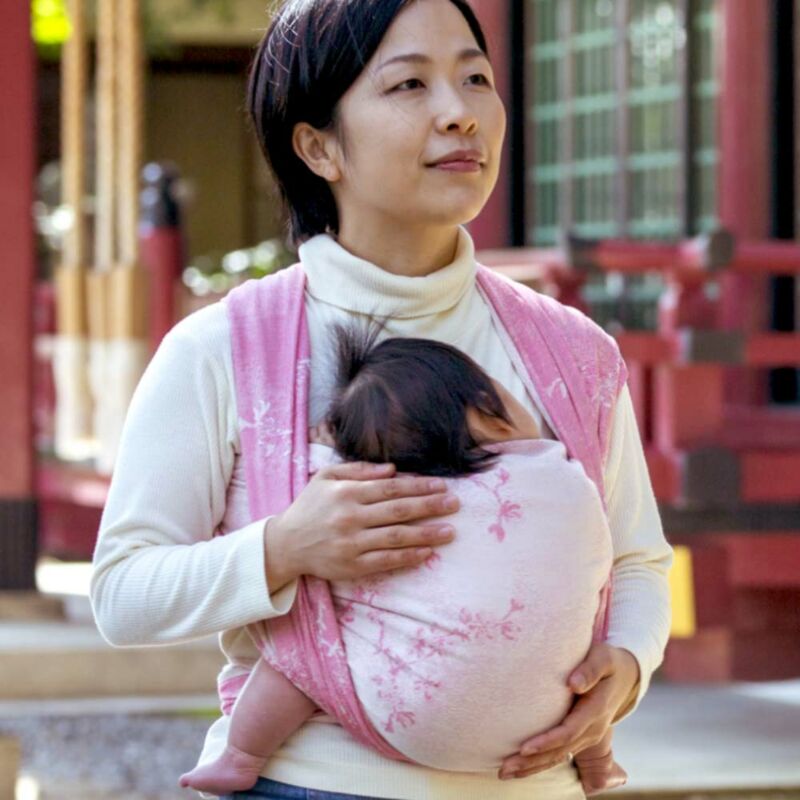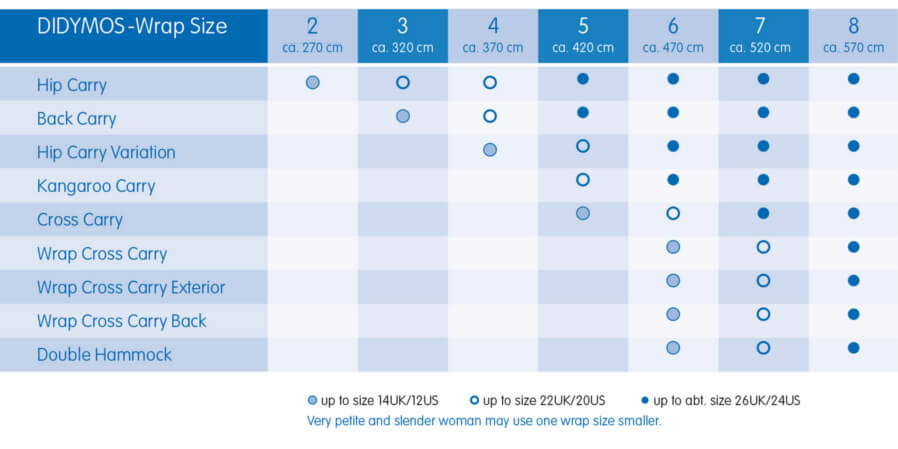
Woven wraps are a beautiful way to carry your baby. They're a type of baby carrier that can be tied for front, back and hip carries, and if you've loved using a stretchy wrap for your newborn and young baby, then a woven wrap will allow you to continue wrapping with a larger, heavier baby, toddler and child.
There is a ritual to wrapping; the cloth, the movements, the finish. It can seem daunting at the beginning - the long length of fabric, without structure, and yes, there is a learning curve with it, for sure. However, the lack of structure is exactly what makes a woven wrap so versatile. It can be used with even the smallest babies all the way to preschoolers. The very same wrap. Which also means a woven wrap can be the most economical, cost-effective sling to use - from newborn to toddler, and then with other children too.
Why Do Woven Wraps Come in Different Lengths?
Woven wraps are available in several lengths, most commonly in sizes 2-7 (shortest to longest). The length you choose depends on the types carries you’d like to do (single layer / multi layer), and your dress/shirt size. If you’d like a wrap to last from newborn to toddler onwards, with the most versatility, opt for either a size 5 (4.2m), size 6 (4.6m) or a size 7 (5.2m) (also known as your base size) - use the size guide here to work out which of these is your base size.
There is a learning curve with wraps, however all come with detailed instructions, and we are always super-happy to advise and provide guidance on which wrap is best for you.

What are the Different Types of Carries?
There are dozens of different wrapping techniques. You can learn one, or you can learn few - it’s completely your choice. You know yourself what will work for you and your baby. With wrapping, there is so much versatility - you can have a newborn snuggled on your front, or a toddler sleeping on your back.
Carrying Baby on Your Front
Front Wrap Cross Carry
The ‘go-to’ position that most parents start with is the Front Wrap Cross Carry (FWCC). It’s a superb option for carrying newborns or premature babies and even toddlers. Three fully adjustable layers of fabric support your child’s weight, holding their little head and body steadily on all sides. You can provide an additional neck support by rolling a muslin diaper or similar into the top edge of the sling, creating a “collar” that reaches up to the back of your child’s head.
The wide fabric bands distribute the weight very evenly across your shoulders, back, and hips, enabling you to comfortably carry a bigger child, too, while maintaining an upright posture that protects your back.
- Baby's Position: upright on your chest.
- From Age: from birth upwards.
- Suitable for Wrap Size: 5 and upwards and the Didymos Jersey Wrap.
Pro Tip - For bigger babies who already have good body control, you can also spread the lateral bands over their bottom. This further eases the load on you and makes it easier for you to carry your child.
Carrying Baby on Your Hip
Simple Hip Carry
For many parents, carrying their child on their hip is a completely natural and almost automatic thing to do. This is also true for the baby, whose reflex is to clamp on with their legs. It provides even support for your baby’s back, which is particularly important when they can’t yet sit up unsupported.
- Baby's Position: upright on your hip.
- From Age: 12 weeks upwards.
- Suitable For Wrap Size: 1 upwards.
Pro Tip - This is another cool, single layer carry, so a great option for warmer weather and baby’s who run warm. With younger babies, be sure to walk enough fabric up baby’s back so they are fully supported, and tighten piece by piece across the width of the wrap.
Pro Tip - This is another cool, single layer carry, so a great option for warmer weather and baby’s who run warm. With younger babies, be sure to walk enough fabric up baby’s back so they are fully supported, and tighten piece by piece across the width of the wrap.
Carrying Baby on Your Back
Rucksack Carry
As your baby’s gradually getting bigger and you find you need a little more freedom when carrying, then why not give the rucksack carrying position a try! It enables you to carry your child in an ergonomically healthy way, whilst they watch everything going on around them, and best of all, they’re still connected to you, as they are parent-facing.
Tying your carrier in the rucksack position takes a bit of practice, as with most things in life. If you have a sling in size 4 or above, you can tie the woven wrap ends around your stomach once your child is sitting securely on your back, for even greater carrying comfort.
- Baby's Position: upright on your back.
- From Age: a few weeks onwards (with guidance).
- Suitable for Wrap Size: 4 upwards.
Pro Tip - Rather than tying the wrap off at your waist, cross each end over to the opposite shoulder and hook the fabric behind the shoulder strap, pulling out at the inside of your chest. No need to knot now - although there are lots of fancy fishes that can be achieved using this method.
Wrapping is the most versatile, economical way of carrying your baby, it gives you a deep connection with your baby, and it’s a huge amount of fun too!
 5,467 Reviews
5,467 Reviews